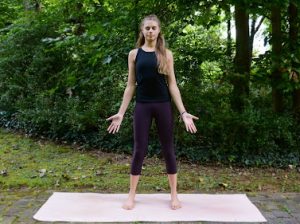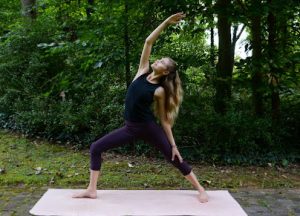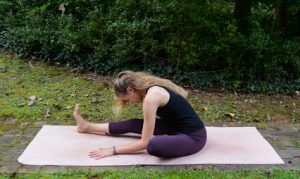Sacred Union: When Yoga & Ayurveda Meet
The Magic of Yoga & Ayurveda
When Yoga and Ayurveda meet, there is a magic that happens. They are sisters, inseparable and incomplete without the other. But in the Western world, Yoga has been given all the attention, leaving Ayurveda to dwell in the nooks and crannies of the Yoga community. Luckily, Ayurveda is making a comeback, and more practitioners are waking up to the insights of this ancient science. When brought together, Yoga and Ayurveda show us the way back to greater health, harmony, and well-being for all.
As we dive in, I will often be referencing Dr. David Frawley’s Yoga & Ayurveda: Self-Healing and Self-Realization, a great resource for deepening your understanding of both traditions.
Let’s start at the beginning, the birthplace of these two powerful practices.
Both Yoga and Ayurveda stem from the Samkhya school of Vedic philosophy, as taught by the sage Kapila. These sacred sciences came up together in South Asia about 5,000 years ago, and have always been used in conjunction to create a holistic physiological, psychological, and spiritual system of well-being.
Ayurveda is recognized as the science of self-healing, and is the practice of restoring wholeness to body and mind through diet, movement, mindfulness, and other lifestyle practices.
Sacred Science of Yoga
Yoga is the science of self-realization, the remembrance of one’s true nature. The journey towards self-realization depends upon the wellness of your body and mind; so, Ayurveda harmonizes the outer, and also inner, aspects of your being so that you may pursue greater spiritual depths and, eventually, realize your true nature as Spirit.
When you try to separate one from the other, you are left with an incomplete system. Ayurveda alone still offers many benefits to your physical and mental health, but without Yoga, you lose the concepts that are so often included in Ayurvedic treatment plans like Asana (postures) or Svadhyaya (self-study).
Yoga alone provides the practitioner with ethical guidelines, movement and mindfulness practices, and devotional rituals. But it lacks the personalized insight of Ayurveda to recommend proper diet, digestive remedies, self-care practices, and daily routine.
The Doshas
One clear example of these sisters working in unison is through the doshas. The doshas, or biological humors, help you to identify your natural state of health, as well as any current imbalances you may be experiencing. Understanding your own dosha is exceedingly useful when creating a lifestyle that supports your mind and body. This is how our practices become personalized as you craft routines and shift habits in favor of greater health and harmony.
This personalization provided by the doshas is what makes these two traditions truly unique. Yogic practices such as asana and pranayama are commonly used in Ayurvedic treatment plans; the style of practice will be dependent upon the student’s dosha. In turn, the wisdom of your dosha can help steer you towards the right practices for your unique mind-body make-up. You’ll remember how to translate your body’s messages, observe your mental chatter, and make adjustments based on your constitution.
Tridoshic Yoga Practice
So, let’s put these theories into practice. Here’s a Tridoshic Sequence (meaning all 3 doshas in balance) for you to try at home:
Hold each pose for 5 to 10 breaths; allow yourself at least 10 minutes for Savasana to finish out your practice.
Tadasana (Mountain Pose)

Stand with your feet about hips-width distance apart. Root down through the soles of your feet, and draw energy up through your legs. Let your spine lengthen up so that you stand tall, and rest your arms at your sides.
Surya Namaskar A (Sun Salutations)
From Tadasana, inhale and reach your arms up to the sky. As you exhale, fold forward over your legs. Inhale to lift up halfway, and exhale through your plank pose to your stomach. Inhale to lift your heart in a backbend, and exhale your hips back into Adho Mukha Svanasana (Downward-facing Dog). Step up to the top of your mat, and repeat this sequence for 3 rounds.
Virabhadrasana 1 (Warrior 1)
Step one foot back, and turn your toes out to about a 45 degree angle. Bend into your front knee and rise to stand, squaring off your hips and shoulders.
Virabhadrasana 2 (Warrior 2)
From Warrior 1, turn your back toes to face the long edge of your mat, so that your front foot is perpendicular to your back foot. Spread your arms out to your sides in a T shape, allowing your hips and chest to open towards the side of your mat.
Reverse Warrior
From Warrior 2, drop your back hand down to your back leg, and reach your front arm up and back, creating a side body stretch.
Balasana (Child’s Pose)
From hands and knees, bring your big toes together to touch so that your legs create a V shape. Sit your hips back towards your heels, and allow your head and chest to lower towards the mat. Stay for 5 rounds of breath or more.
Dandasana (Staff Pose)
Sit with your legs long in front of you so that your body makes an L shape. Plant your palms to either side of your hips, and press down into the mat. At the same time, lengthen the crown of your head up, and your legs out. Stay for 5 rounds of breath.
Janu Sirsasana
From Staff Pose, bring one foot to the inner edge of the opposite leg, letting your knee open out to the side. Hinge from your hips to fold forward over the straight leg. Stay for 5 rounds of breath or more, then repeat on the other side.
Supine Spinal Twist
Lay down on your back. Bring one knee into your chest, and extend your other leg out long on the mat. Gently bring your bent knee to cross over your body into a twist. Allow both shoulders to stay grounded as you rotate through your spine. Stay for 5 breaths or more, then repeat on the other side.
Savasana (Corpse Pose)
Lay on your back with your legs long on the mat and your arms resting by your sides. Turn your palms to face the sky, and let your body relax into the support of the earth. You may like to add props for greater comfort in your savasana. Stay for roughly 10 minutes before ending your practice.
Conclusion
When Yoga and Ayurveda meet, there is a remembrance of an old way of being. This sacred union reminds us of our interconnectedness, our power to heal, and the truth of who we are. I hope you feel inspired to explore how Ayurveda and Yoga together can change your life; maybe it starts with improving your digestion or adopting seasonal practices. However your path unfolds, may it lead you home.
~ Lydia Willig
Owner & Director of Earth Walker Yoga, and SPY graduate
Website: Earth Walker Yoga
Facebook: Earth Walker Yoga





